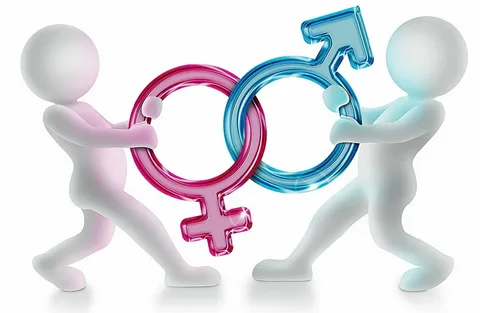The world is full of diverse ways people express who they are, including their gender identities. For many, these expressions go beyond the traditional labels of male and female. Understanding the difference between genderfluid and nonbinary can help us build a more inclusive and respectful community.
A genderfluid person might feel like their identity shifts over time, while a nonbinary individual identifies outside the typical male and female categories. These terms are not interchangeable, but they share the common goal of challenging outdated ideas about gender.
At Sunny Days Psychotherapy, we support individuals exploring their identities, helping them embrace their authentic selves. Whether you’re learning for personal growth or to support someone you care about, understanding these concepts is a meaningful step toward acceptance and equality.
Breaking Down Genderfluid: The Art of Fluidity
Genderfluid individuals often experience their gender expression as shifting, much like the ebb and flow of a tide. One day, they may identify as more masculine; the next, they may feel feminine or somewhere in between. This fluidity is not a choice but a natural part of who they are.
For someone who is genderfluid, the way they dress, speak, or interact with the world can change to match their identity at any given moment. Society’s expectations of static gender roles often create misunderstandings about their experiences.
Using inclusive language and avoiding assumptions can make genderfluid individuals feel accepted and respected. Recognizing fluidity as valid is a step toward broader gender inclusivity and embracing the beautiful diversity of the gender identity spectrum
Exploring Nonbinary: Breaking Free from the Binary Mold
Nonbinary people exist outside the traditional male or female categories. For them, non-cisgender identities often represent a mix of genders, no gender, or something entirely unique. Nonbinary individuals may prefer gender-neutral pronouns like “they/them” and often express themselves in ways that defy stereotypes.
Being nonbinary is not tied to appearance or behavior. Someone identifying this way might look like anyone else but hold a deeply personal understanding of their gender. Society’s reliance on binary norms can make it hard for nonbinary individuals to feel seen, but this is slowly changing as more people educate themselves on understanding gender identities.
Nonbinary individuals bring unique perspectives to the conversation about inclusivity and challenge outdated views about what it means to be male or female. Supporting their journey can make a lasting difference in creating a more accepting world.
Key Differences Between Genderfluid and Nonbinary
-
Definition and Meaning
The difference between genderfluid and nonbinary begins with their definitions. Genderfluid describes individuals whose identities change over time. In contrast, nonbinary is a term for those who reject the binary framework of male and female entirely. While both challenge traditional gender roles, their experiences differ significantly.
-
Experience and Expression
Genderfluid individuals often navigate their identities daily or even moment-to-moment, making adaptability a key part of their lives. Their gender affirming therapy often involves exploring these transitions in a supportive environment. Nonbinary people, however, maintain a consistent identity that does not conform to male or female roles. Their expressions might range from blending masculine and feminine traits to embracing an entirely neutral presentation.
-
Common Misunderstandings
Both genderfluid and nonbinary individuals face challenges due to a lack of understanding. Misusing pronouns or assuming their identities are phases are common mistakes. Educating ourselves on LGBTQ+ terms can prevent such errors and create safer spaces for everyone.
Shared Challenges Faced by Genderfluid and Nonbinary Individuals
Both genderfluid and nonbinary individuals often encounter societal barriers. Outdated systems, like binary gender markers on official documents, force them into categories that don’t reflect their reality. These challenges underscore the difference between genderfluid and nonbinary identities, as both experience distinct struggles with societal expectations. Discrimination, whether overt or subtle, can impact their mental health, highlighting the importance of access to LGBTQ+ therapists in Chicago and beyond.
Family and friends may struggle to understand their journeys, leading to feelings of isolation. Even seemingly simple acts, such as choosing a bathroom, can become sources of stress. Despite these obstacles, many individuals find strength in supportive communities and allies who respect their experiences.
Advocacy for inclusive practices, like gender-neutral bathrooms and policies, helps combat these challenges and fosters a society that values everyone for who they are.
How to Support Genderfluid and Nonbinary Individuals
-
Educate Yourself
Understanding terms like nonbinary vs. genderfluid begins with education. Books, articles, and online resources can provide insight into the diverse experiences of these individuals. Familiarity with concepts like the fluidity in gender helps build empathy and reduces unconscious bias.
-
Use Inclusive Language
Respecting pronouns for nonbinary and gender fluid people is one of the easiest yet most impactful ways to show support. Avoid assuming someone’s gender based on appearance. Asking politely or using neutral terms until clarified demonstrates respect.
-
Be an Ally in Practice
Support goes beyond words. Advocate for policies that reflect inclusivity, like gender-neutral restrooms or workplace diversity training. Challenge stereotypes when you encounter them, whether in conversations or media portrayals.
Allies can also amplify the voices of nonbinary and gender fluid individuals, ensuring their perspectives are heard and valued. Small steps like listening, learning, and sharing knowledge create meaningful change for everyone.
Final Thoughts: Embracing Diversity Beyond Labels
Understanding the difference between genderfluid and nonbinary is not just about definitions but recognizing the rich diversity of human identity. Both challenge rigid stereotypes and encourage us to rethink outdated views on gender.
As more people embrace inclusivity, the path toward equality becomes clearer. Supporting genderfluid and nonbinary individuals requires compassion, education, and action. At Sunny Days Psychotherapy, we believe that celebrating individuality strengthens our communities and helps us all grow.
By learning and listening, we can ensure everyone feels valued and respected, regardless of how they identify. Together, we can create a world where diversity is celebrated, not feared.
NOTE: This content is for SEO marketing purpose.

